Comparative brain morphology of Neotropical parrots (Aves, Psittaciformes) inferred from virtual 3D endocasts
- PMID: 26053196
- PMCID: PMC4948055
- DOI: 10.1111/joa.12325
Comparative brain morphology of Neotropical parrots (Aves, Psittaciformes) inferred from virtual 3D endocasts
Abstract
Psittaciformes are a very diverse group of non-passerine birds, with advanced cognitive abilities and highly developed locomotor and feeding behaviours. Using computed tomography and three-dimensional (3D) visualization software, the endocasts of 14 extant Neotropical parrots were reconstructed, with the aim of analysing, comparing and exploring the morphology of the brain within the clade. A 3D geomorphometric analysis was performed, and the encephalization quotient (EQ) was calculated. Brain morphology character states were traced onto a Psittaciformes tree in order to facilitate interpretation of morphological traits in a phylogenetic context. Our results indicate that: (i) there are two conspicuously distinct brain morphologies, one considered walnut type (quadrangular and wider than long) and the other rounded (narrower and rostrally tapered); (ii) Psittaciformes possess a noticeable notch between hemisphaeria that divides the bulbus olfactorius; (iii) the plesiomorphic and most frequently observed characteristics of Neotropical parrots are a rostrally tapered telencephalon in dorsal view, distinctly enlarged dorsal expansion of the eminentia sagittalis and conspicuous fissura mediana; (iv) there is a positive correlation between body mass and brain volume; (v) psittacids are characterized by high EQ values that suggest high brain volumes in relation to their body masses; and (vi) the endocranial morphology of the Psittaciformes as a whole is distinctive relative to other birds. This new knowledge of brain morphology offers much potential for further insight in paleoneurological, phylogenetic and evolutionary studies.
Keywords: 3D brain reconstructions; Aves; character mapping; endocranial morphology; geometric morphometrics.
© 2015 Anatomical Society.
Figures

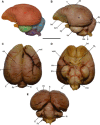
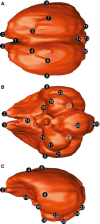
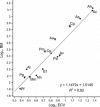
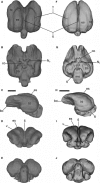
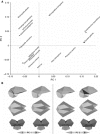
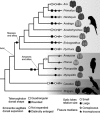

References
-
- Balanoff AM, Bever GS, Rowe TB, et al. (2013) Evolutionary origins of the avian brain. Nature 501, 93–97. - PubMed
-
- Baumel JJ, Witmer LM (1993) Osteologia In: Handbook of Avian Anatomy: Nomina Anatomica Avium, No. 23. (eds Baumel J, King A, Breazile J, Evans H, Vanden Berge J.), pp. 45–132. Cambridge, MA: Publications of the Nuttall Ornithological Club.
-
- Bookstein FL (1991) Morphometric Tools for Landmark Data: Geometry and Biology. New York, NY: Cambridge University Pres.
-
- Breazile J, Kuenzel W (1993) Systema nervosum centrale In: Handbook of Avian Anatomy: Nomina Anatomica Avium, No. 23. (eds Baumel J, King A, Breazile J, Evans H, Vanden Berge J.), pp. 493–554. Cambridge, MA: Publications of the Nuttall Ornithological Club.
Publication types
MeSH terms
LinkOut - more resources
Full Text Sources
Other Literature Sources

